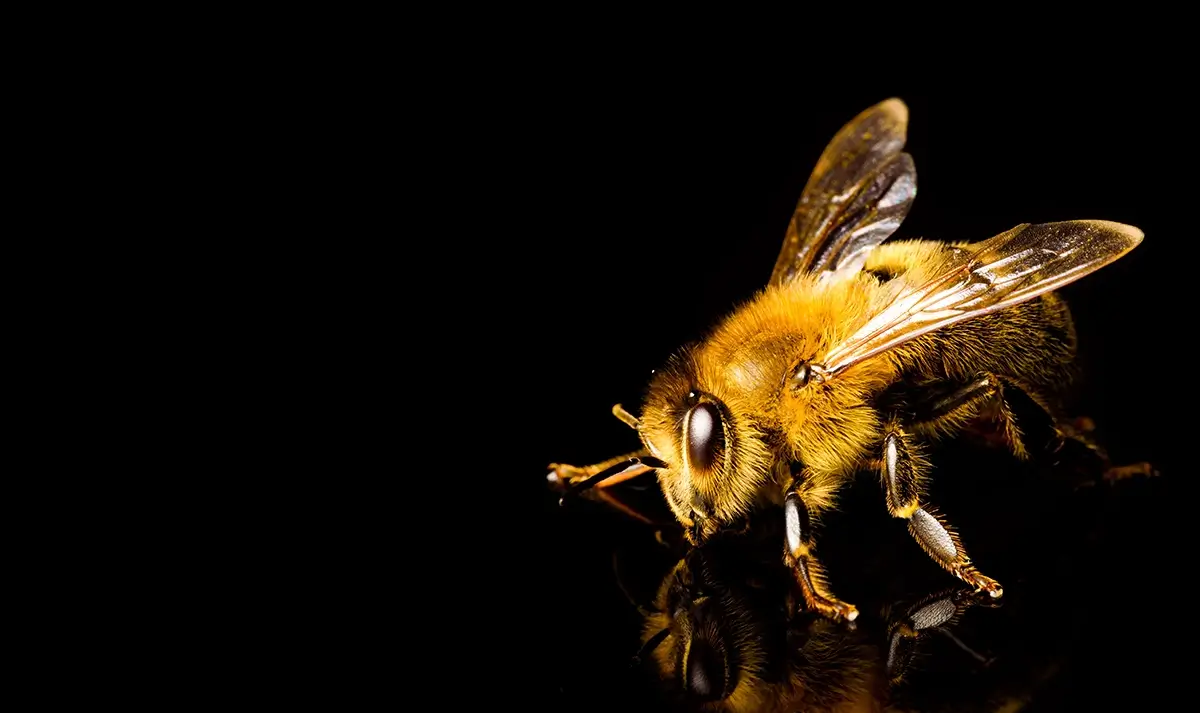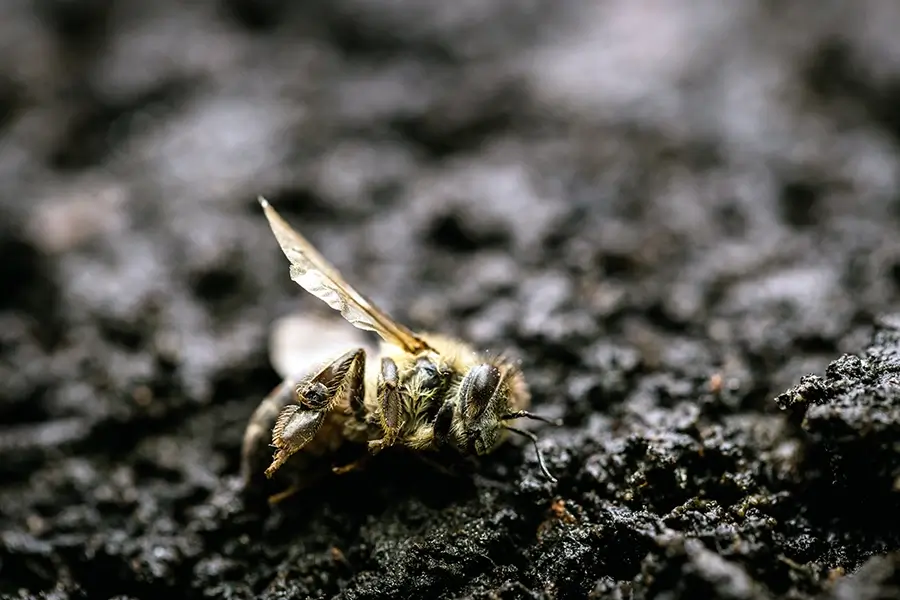
DON’T GO KILLING ALL THE BEES
A Silent Catastrophe: The Disappearance of America’s Honeybees & the Looming Environmental Disaster
“If you’re after getting the honey, then you don’t go killing all the bees…” – Joe Strummer, Johnny Appleseed (2001)
Joe Strummer’s words feel eerily prophetic today as the worst honeybee die-off in recorded history unfolds across the U.S. Beekeepers are reporting catastrophic losses, with some losing up to 95% of their hives in just months. This isn’t just a crisis for the beekeeping industry – it’s a national food security emergency. Without honeybees, our ability to grow essential crops like almonds, apples, blueberries, and avocados collapses, leaving America facing skyrocketing food prices, economic instability, and environmental devastation.
The U.S. is now facing the worst honeybee loss in recorded history, with hundreds of millions of bees mysteriously dying over the past eight months. Beekeepers across the country are reporting unprecedented losses, with some losing up to 80% of their hives – while others, like one Texas beekeeper, have lost over 95% in just months. Scientists are scrambling to identify the cause, but one thing is clear: this isn’t just a beekeeper crisis – this is an environmental disaster with massive consequences for our planet and food supply.

Bees Are Dying at Alarming Rates – What’s Causing It?
Blake Shook, a leading commercial beekeeper, warns that 25% of beekeeping businesses could collapse by the end of this year if the die-offs continue.
“I got a call from a friend who had 20,000 beehives at the start of winter, and he’s at less than 1,000. He said, ‘This is it, I’m done.’ I’ve had far too many of those calls in the last few weeks,” Shook told CBS News.
Researchers have identified several possible causes, including:
- Pesticides & Herbicides – Chemical-heavy farming practices have led to the widespread use of neonicotinoids and other pesticides that weaken bees’ immune systems.
- Climate Change – Unpredictable weather patterns, temperature fluctuations, and extreme storms are throwing off bee foraging cycles.
- Habitat Destruction – Urban sprawl, deforestation, and monoculture farming have drastically reduced natural pollinator habitats.
- Diseases & Parasites – The spread of mites and other pathogens is further devastating weakened colonies.
Why This Matters: Bees Are the Backbone of U.S. Agriculture & the Ecosystem
Honeybees do far more than produce honey. They are essential pollinators, responsible for fertilizing 75% of the fruits, nuts, and vegetables grown in the U.S.—a staggering $15 billion worth of crops annually. Without them, entire ecosystems and food chains could collapse.
The Environmental Impact of Bee Decline
- Disrupting Natural Ecosystems – Bees pollinate countless wild plants that sustain birds, small mammals, and other pollinators. Their loss would set off a chain reaction of ecosystem instability.
- Loss of Biodiversity – Without pollinators, many plant species will struggle to reproduce, leading to declines in biodiversity.
- Climate Feedback Loop – Fewer pollinators mean fewer trees and plants absorbing CO₂, accelerating global warming.
- Colony Collapse Disorder (CCD) – The continued die-offs could mean a permanent loss of genetic diversity in bee populations, making it even harder for them to recover.
Meanwhile….
New Tariffs + Bee Decline = A Perfect Storm for Food Prices & Sustainability
As if the bee crisis wasn’t enough, new U.S. tariffs on imported produce and flowers are making the problem worse. With fewer bees to pollinate crops and higher costs for imported fruits and vegetables, the impact will be felt at grocery stores nationwide.
What happens when U.S. farms can’t produce enough food?
- Soaring prices on essential fruits, vegetables, nuts, and honey.
- Increased reliance on synthetic and GMO alternatives that lack the same nutritional value.
- A shift toward processed foods as fresh produce becomes more expensive and scarce.
What Can We Do?
We are not powerless. Here’s how you can make a difference:
- Plant Pollinator-Friendly Gardens – Grow wildflowers, milkweed, and native plants to provide bees with nectar and pollen.
- Say No to Pesticides – Use organic gardening methods and support sustainable farming practices.
- Support Local Beekeepers – Buy raw, locally sourced honey to help small-scale beekeepers stay in business.
- Push for Environmental Policies – Demand bans on harmful pesticides and stronger habitat protections for pollinators.
- Spread Awareness – Educate your community about the crucial role bees play in both food production and the environment.

What Happens If the U.S. Loses Too Many Bees?
Imagine waking up in the near future, where honeybees have almost disappeared. It might not seem like an immediate catastrophe, but over time, the consequences would be devastating for food production, the economy, and the environment.
Year 1-3: The Food Supply Shock
- Pollination-dependent crops begin failing – Almonds, apples, blueberries, avocados, and countless other fruits, nuts, and vegetables see dramatic production drops.
- Food prices skyrocket – A simple salad or a jar of almond butter becomes a luxury. Farmers struggle to keep up, and the cost of produce doubles or even triples.
- Import reliance increases – With fewer U.S.-grown crops, the country must import more produce at higher costs due to new tariffs.
Year 4-6: Economic and Agricultural Collapse
- Farmers go bankrupt – With no bees to pollinate crops, farms shut down, leading to mass unemployment in agriculture.
- Dairy and meat industries suffer – Alfalfa, a key feed crop for livestock, requires pollination. Without it, dairy and beef production drop significantly, raising prices even further.
- Processed foods dominate shelves – As fresh produce becomes scarce, ultra-processed and synthetic foods take over, increasing health risks and dietary deficiencies.
Year 7-10: Environmental Chain Reaction
- Ecosystems begin collapsing – Wild plants relying on pollination start to disappear, affecting birds, small mammals, and entire food chains.
- Climate change accelerates – Fewer plants mean less carbon absorption, worsening global warming.
- Artificial pollination experiments – Scientists attempt robotic pollinators and hand-pollination, but these solutions are expensive, inefficient, and unsustainable.
Beyond 10 Years: A Different World
- Bee-pollinated foods become extinct – Many of the fruits, nuts, and vegetables we take for granted are no longer available.
- The U.S. shifts to a synthetic diet – Lab-grown food, GMO crops, and artificial pollination become the norm.
- A global ripple effect – Other countries that depend on U.S. agricultural exports face famine and food shortages
The Bottom Line: This is More Than a Food Crisis—It’s a Fight for the Planet
If we lose bees at this rate, America’s food supply will be permanently changed, ecosystems will suffer, and climate change will accelerate. This crisis is not in the distant future—it is happening now, and it affects all of us.
The loss of bees isn’t just a farming issue—it’s a national food security and environmental survival issue. We still have time to reverse course by protecting pollinators, supporting sustainable agriculture, and demanding policy changes to safeguard bee populations.
As Joe Strummer warned us in 2001, “If you’re after getting the honey, then you don’t go killing all the bees.” And in another verse, he sang, “You can’t run, you can’t hide / You can’t run away from the tears in your eyes.”
If we turn a blind eye to this crisis, we’re not just losing bees—we’re jeopardizing our food, our farms, and the future of our planet.
No bees, no food, no future. The Time to Act Is Now!
Sources:
CBS News: Millions of Bees Have Died This Year
Texas A&M University Research on Pollinators
USDA Report on Pollination & Food Supply
Environmental Protection Agency (EPA) Reports on Pesticides & Pollinators


